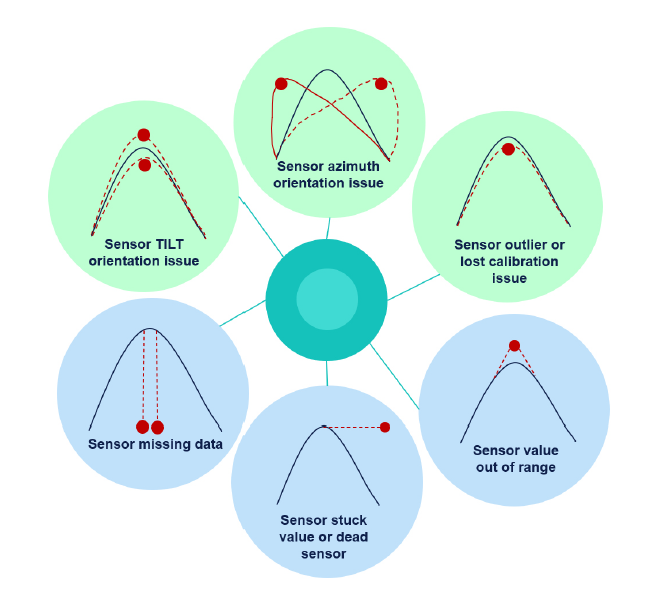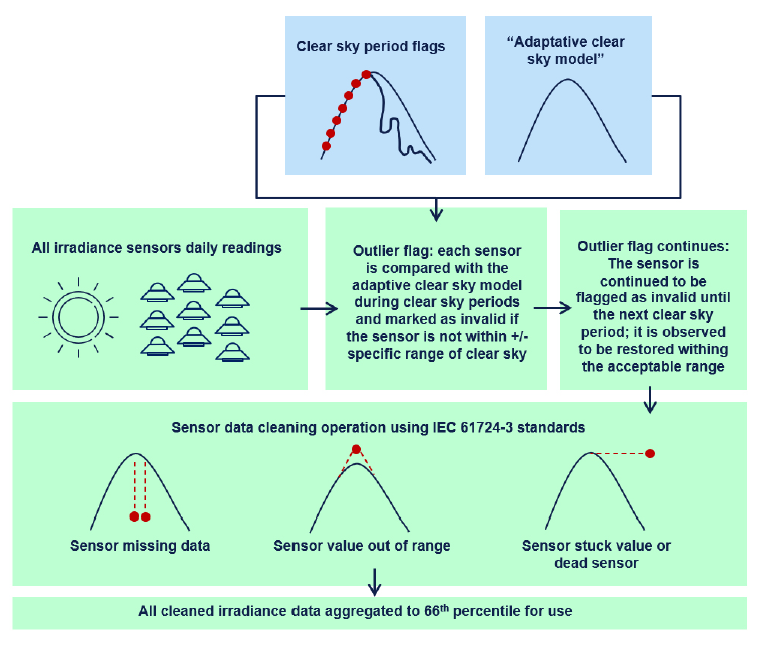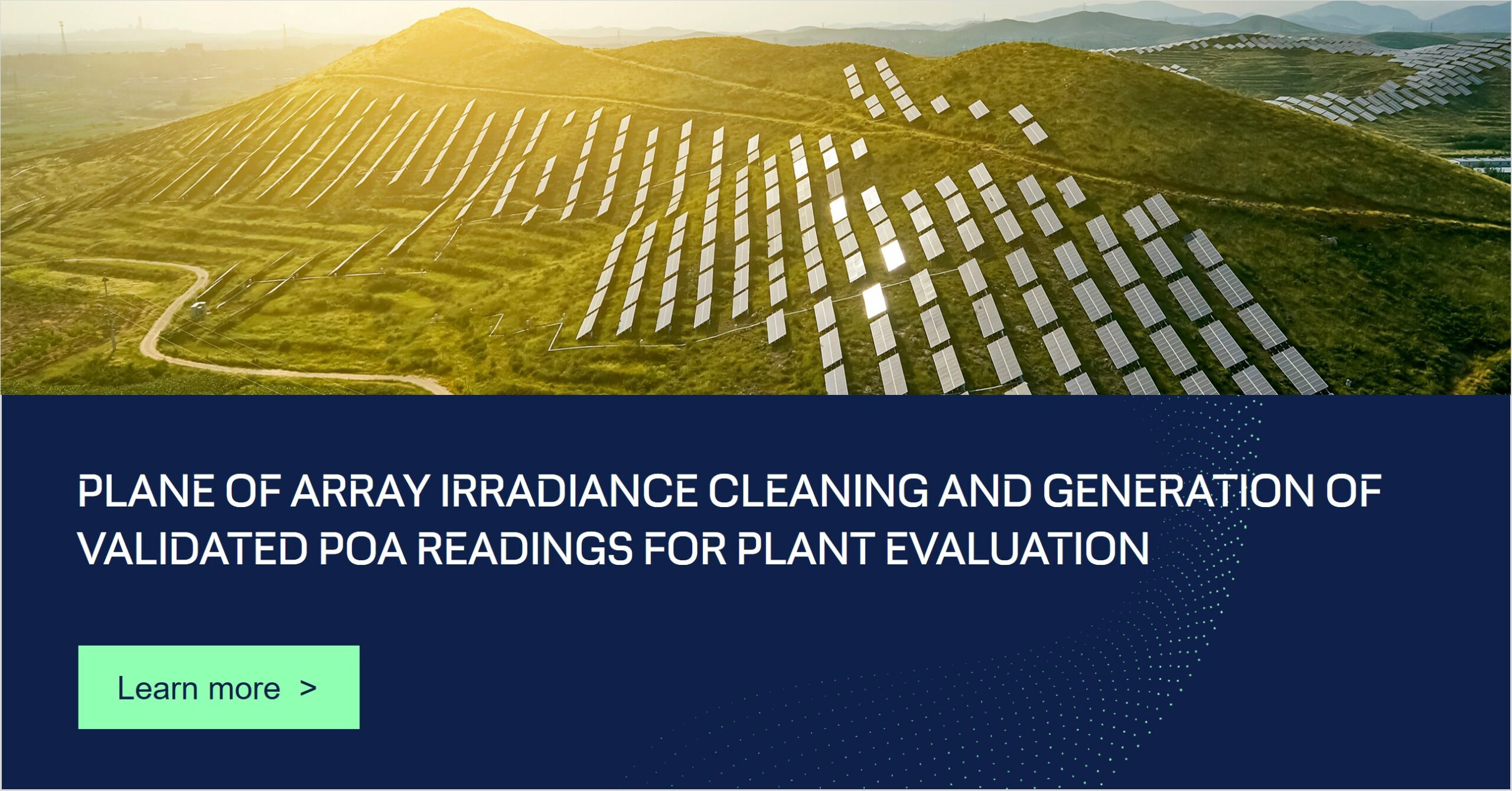Solar power plants rely heavily on accurate irradiance measurements to assess their performance. However, issues with irradiance sensors can lead to erroneous data, impacting the reliability of plant evaluations. In this whitepaper, we delve into the challenges associated with irradiance sensors and present a methodology for cleaning and validating POA irradiance readings to ensure accurate plant evaluation.
General issues with Irradiance Sensors
Irradiance sensors commonly encounter problems such as tilt and azimuth orientation discrepancies, sensor drift, missing data, dead or stalled readings, and out-of-range measurements. These issues can significantly affect the reliability of irradiance data and, consequently, plant performance evaluations.

Methodology
Our methodology involves cleaning and aggregating multiple irradiance sensor readings to generate a single validated irradiance measurement representative of the plant. We use adaptive clear sky models to identify erroneous sensor data and derive correction factors to generate accurate irradiance readings.

Case study
We applied our methodology to a single-axis tracking site in the United States with nine irradiance POA sensors. By feeding all sensor readings into our algorithm, we successfully detected outliers and removed invalid data points, resulting in a final validated POA irradiance dataset.
Download the whitepaper
Ensuring the accuracy of ground station irradiance sensor measurements is crucial for effective solar plant operation. Our automated approach to cleaning and validating irradiance data streamlines the process, enabling operators to make informed decisions based on reliable plant performance evaluations.
Do you want to meet us and talk to our renewable energy experts?
We look forward to connecting with you and sharing our expertise in monitoring, control and predictive maintenance of renewable assets for utility-scale plants. Fill in the form to request a meeting with our team who will be available to answer questions, provide demonstrations, and offer insights on best practices.
Error: Contact form not found.

